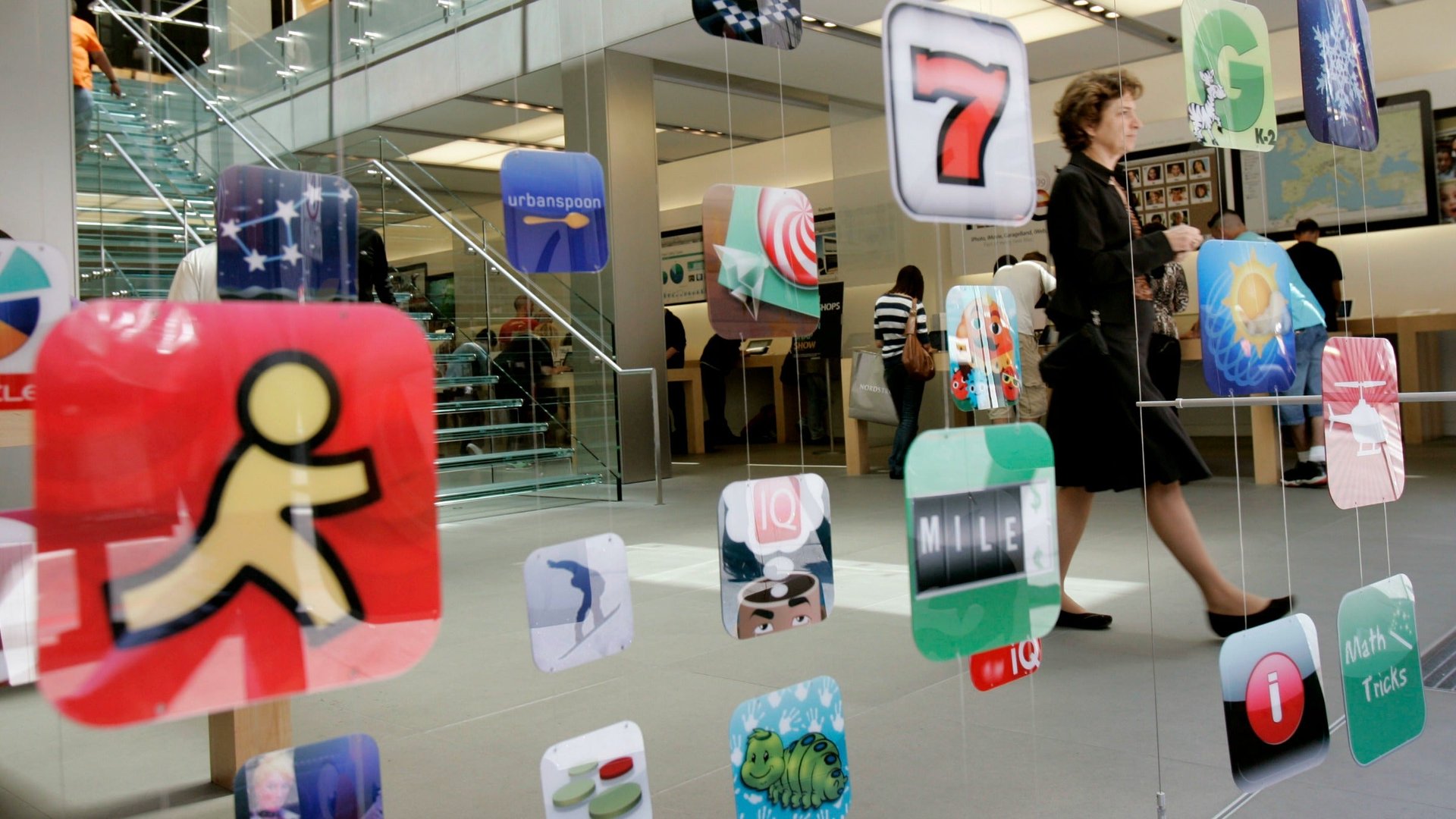Apps overtook music in less than five years—all of big media is next
This originally appeared at LinkedIn. Follow Horace Dediu here.

Last week Apple reported that 60 billion apps have been installed since the iTunes App Store opened in July 2008. In May Google reported that their Play Store download total had reached 48 billion. Overall therefore it would seem that 120 billion apps have probably been installed by iOS and Android users. On iOS alone over 60 million apps are downloaded for the first time every day.
Numbers like these are hard to grasp without context. It would be useful to compare them with some other measure of performance. The trouble is that apps are a new medium with no comparables. It’s also a medium that’s been around for only about 5 years. We could try to compare the totals with other downloaded items, music for instance. The total for the iTunes Music Store would be about 30 billion units (the last update was 25 billion in the spring). It’s not quite satisfying a comparison however since songs have been sold online for much longer, their price is much higher on average and they have a physical medium equivalent that’s hard to know what to do with.
Video downloads or console game purchases are similarly difficult to compare. However a comparison is needed. Not merely so that we can gain perspective on scale but because these apps are substitutive of time spent. What I mean is that time consumers have is a finite quantity. If they spend it on apps it’s likely they are not spending it with something else. Some of that time might be idle time (for example niche time usually spent waiting) but increasingly people are choosing to substitute app time for another media. Downloads and value captured by developers is a crude proxy for a bigger competition for consumer attention, which is a scarce commodity.
So we have to wonder what users are, or will be, abandoning in favor of app time. This pattern of shifting attention from one medium to another has happened in the past. TV took attention away from radio (and movies.) Recorded music took time away from live music. The web took time away (or diluted the quality of attention) from TV. Social media is taking a great deal of attention away from traditional media. YouTube is absorbing teen screen time away from TV.
My contention is that app time will impact many of these incumbent media and that both the effect and the consequences will be hard to measure in advance or even ex-post facto. These new media objects are not measured easily and therefore are flying under the radar of traditional metrics used by the industry. Such absence of reliable measurement is one of the hallmarks of a disruptive shift in industry: You can’t perceive what you can’t measure and you certainly can’t manage it.
So we must try new approaches. One way to think about the effect is to compare how the creators of the new content are being compensated. If there is more value created in a new medium, it’s probable that talent will move rapidly to it. We saw this when the movie industry overtook theater. We saw it again when TV overtook film. We are seeing it now with developers, especially the young, moving to web and mobile and away from PC and Enterprise. The movement of talent is actually more rapid than the movement of capital. Talent, especially in the young, reacts impulsively and instinctively, sensing shifts in usage before the data is available for analysis by those responsible for allocating capital.
If we look at the app ecosystem today we can observe that the incentives are enormous for talent. Apple reported $13 billion total payments to developers. That figure was up from $10 billion in June. As that figure is only 70% of gross income, the run rate of app revenues is over $1 billion/month and accelerating. If we assume that Google is paying a similar amount (Google has supposedly far more market share) and assuming further that many developers are being paid for building apps for clients (this service market is assumed to be bigger than app purchases) then it would be safe to assume that app developers are collecting over $3 billion/month or a run-rate of $36 billion a year. And this rate is rising rapidly.
Now compare this with the music industry. IFPI reported that digital music revenues in 2012 were $5.6 billion and that total recorded music sales in 2012 were $16.5. Even if we assume a generous 10% increase in music sales for 2013 we still have an app industry generating revenues at twice the rate of recorded music.
Apps alone (without services) probably generate more than four times the revenues of digital music.
But what is really fearsome is the rate of growth. Apps overtook music as a business model from a zero start in less than five years. The trajectory would take the app business to a point an order of magnitude higher than music in a few more years. Far quicker than the rate at which an industry can adjust its operations to react.
The consequences are, as I said, hard to fathom. Consider that many of the $50 tablets sold in Asia (and we don’t even know how many there are) are being used as TV screens to consume pirated media side-loaded into them daily. They are not used for what we think tablets, especially iPads, are used for: browsing, apps and other network-heavy use cases. They are being used as media terminals. Media that is being packaged illegally for offline consumption.
If the behavior of users is shifting to this model then the victims of the mobile devices will not be just the PC makers. It will be all of big media. The Appocalypse is coming.